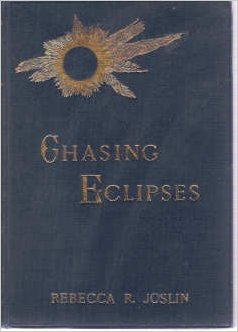
Whether you’re hopping in an Oregon-bound car to catch the total solar eclipse in Salem, boarding a plane for central Wyoming to watch the moon’s shadow pass over Casper, or just staying put to catch a partial view right here in the Bay Area, the library has tons of great information to help you enjoy this rare celestial event. Make sure to check out our Maps and More Guide about the eclipse (and solar eclipses in general). Read Chasing Eclipses (pictured above), a 1929 account of the total solar eclipses of 1905, 1914, and 1925. See this 1957 report from the Georgetown Observatory about eclipses by Vera Rubin (who, incidentally, helped make the case for the existence of dark matter, as described in this New York Times profile). And for a literary accounting of a total solar eclipse, find a copy of Annie Dillard’s Teaching a Stone to Talk and and (re)read her essay about her experience watching (and feeling) the sun disappear behind the moon in central Washington on February 26, 1979:
What you see in an eclipse is entirely different from what you know. It is especially different for those of us whose grasp of astronomy is so frail that, given a flashlight, a grapefruit, two oranges, and fifteen years, we still could not figure out which way to set the clocks for Daylight Saving Time. Usually it is a bit of a trick to keep your knowledge from blinding you. But during an eclipse it is easy. What you see is much more convincing than any wild-eyed theory you may know.